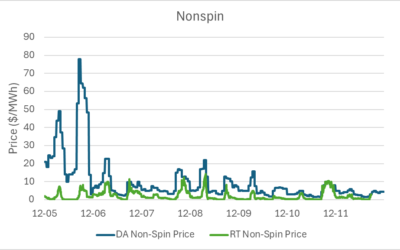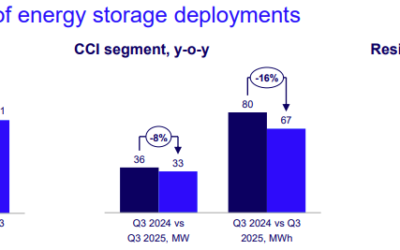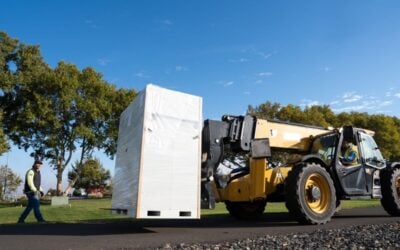
Utility company RWE has begun marketing a tech solution through which data centres, which already integrate batteries for uninterruptible power supply (UPS) systems, can use their UPS to “help stabilise the grid”.
This means the facilities could also help integrate renewable energy onto local networks, RWE said. Basically, for data centres to run 24/7, they are always backed up by UPS systems that use batteries. They only kick in when needed, which is to say, in many regions, they kick in quite rarely.
Those batteries could present an opportunity to absorb power from the grid when supply outstrips demand, or conversely help local grid operators to manage their peak load by injecting power into the grid when, for example, wind and solar energy output drops off.
RWE sent a release to Energy-Storage.news late last week, explaining how the solution works and naming its first customer as Kraftwerks-Simulator-Gesellschaft mbH (KSG), a Germany-headquartered company which runs constant real-time simulations of nuclear power plant operation.
Try Premium for just $1
- Full premium access for the first month at only $1
- Converts to an annual rate after 30 days unless cancelled
- Cancel anytime during the trial period
Premium Benefits
- Expert industry analysis and interviews
- Digital access to PV Tech Power journal
- Exclusive event discounts
Or get the full Premium subscription right away
Or continue reading this article for free
Dubbed, ‘Master+’, it has been developed and brought to market by the utility’s RWE Suppy & Trading business division along with UPS provider Riello Power Systems. It includes a battery with “increased storage capacity” as well as integrated battery monitoring. Like the data centre’s power requirements, the systems are monitored 24/7 and therefore could perform those grid-balancing task automatically, RWE claimed.
This type of added versatility for any facility manager that uses UPS including data centres has been talked about for a while. In a 2018 video interview with Energy-Storage.news, Emiliano Cevenini of UPS provider Vertiv talked about the potential for stationary battery energy storage to allow the systems to “do something proactive” in terms of enabling extra value from their purchased assets.
Customer KSG has taken on an initial 250kW of the “Master+’ solution’s power output along with 1,100kW of emergency power generation to ensure around-the-clock runtime, while the simulation company plans to increase that 250kW investment to 2MW in future as well as adding another emergency power generator.
KSG head of engineering and operations, Dr Burkhard Holl, said the ‘Master+’ solution allows his company to net extra revenues from the energy market by investing in upgrading its data centre, calling it both “profitable and resource-efficient,” also allowing KSG to adopt greater battery storage capacity that is also monitored constantly.
In related news, RWE also said last week that it has cut carbon emissions from its operations by 50% from 2012 levels, which it said had been verified by independent third parties. The Germany-headquartered company has also said it plans to invest up to €5 billion (US$5.41 billion) in renewable energy in the next three years, with €1 billion of that investment to be spent in Germany. This is on an intended path towards “climate neutrality” by 2040.





